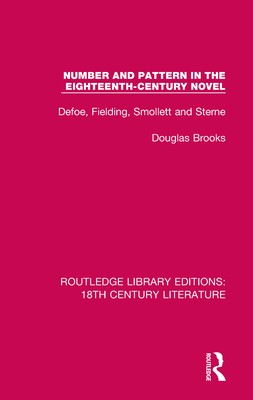
- We will send in 10–14 business days.
- Author: Douglas Brooks
- Publisher: Routledge
- ISBN-10: 0367444046
- ISBN-13: 9780367444044
- Format: 14 x 21.6 x 1.1 cm, minkšti viršeliai
- Language: English
- SAVE -10% with code: EXTRA
Number and Pattern in the Eighteenth-Century Novel (e-book) (used book) | bookbook.eu
Reviews
Description
Numerological patterning in literature, where structural details of a literary work are symbolically related to its meaning on the verbal level, was particularly common from the Middle Ages up to the seventeenth century. Originally published in 1973, the author breaks new ground in revealing that familiarity with this technique lived on into the eighteenth century, supplying the more artistically aware of the early British novelists with meaningful formal guidelines.
An account is given of the origins and continuity of the numerological tradition in Western European - and particularly English - thought as it affected literary structure. The careful structural patterning in the novels of Defoe and in Fielding's Joseph Andrews and Tom Jones is examined in detail. Smollett, too, is shown to have been interested in exploring the possibilities of number and pattern, and the clear-cut numerological framework of Sterne's Tristram Shandy is revealed.
This original and controversial study combines structural analysis with fresh interpretative insights, and draws parallels with painting, music and architecture. It also has an important bearing on the history of ideas in the first half of the eighteenth century.
EXTRA 10 % discount with code: EXTRA
The promotion ends in 23d.20:26:33
The discount code is valid when purchasing from 10 €. Discounts do not stack.
- Author: Douglas Brooks
- Publisher: Routledge
- ISBN-10: 0367444046
- ISBN-13: 9780367444044
- Format: 14 x 21.6 x 1.1 cm, minkšti viršeliai
- Language: English English
Numerological patterning in literature, where structural details of a literary work are symbolically related to its meaning on the verbal level, was particularly common from the Middle Ages up to the seventeenth century. Originally published in 1973, the author breaks new ground in revealing that familiarity with this technique lived on into the eighteenth century, supplying the more artistically aware of the early British novelists with meaningful formal guidelines.
An account is given of the origins and continuity of the numerological tradition in Western European - and particularly English - thought as it affected literary structure. The careful structural patterning in the novels of Defoe and in Fielding's Joseph Andrews and Tom Jones is examined in detail. Smollett, too, is shown to have been interested in exploring the possibilities of number and pattern, and the clear-cut numerological framework of Sterne's Tristram Shandy is revealed.
This original and controversial study combines structural analysis with fresh interpretative insights, and draws parallels with painting, music and architecture. It also has an important bearing on the history of ideas in the first half of the eighteenth century.


Reviews